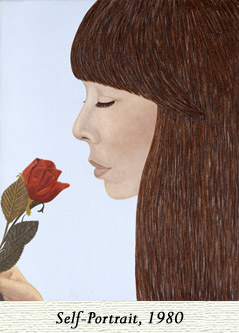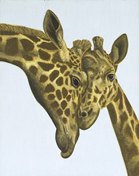
 |
 |
 |
 |
 |
 |
 |
 |
 |
 |

For more than forty years, San Francisco artist Andrea Polland (rhymes with "Holland") has worked independently of current art world trends and fashions.
Whether painting in a realistic or an abstract syle, her organizing principle is always the same: the creation of beauty.
Influenced less by her contemporaries than by the great Modernists of the late nineteenth and early twentieth century, Andrea Polland picks up the thread of classical scene painting and gives it a self-conscious face unique to our time.
The Landscapes and Dreamscapes series are remarkable for their synthesis of surrealistic and literal motifs. One is reminded of both Magritte and Hopper. Time seems to literally stand still for a moment, and then worlds shift--we enter some new realm where colors and figures reach a higher intensity. Suddenly, we want to see everything around us through her eyes. The work is like a portal into another time, a peaceful time of stillness and golden light--magical, delicate.
The first Mindscapes drawings were inspired by a series of lectures on the subject of quantum physics. Ms. Polland was fascinated by the notion that our material world is, at its core, an interplay of sub-atomic particles within enormous spaces. With this new understanding of physical reality, she set out to translate the science into art. The result is yet another, entirely different, time-stopping vision. Here we can almost see Mondrian wandering through one of M.C. Escher's mazes until he finds the secret entrance to Polland's four dimensional world.

Yet for a true glimpse of the artist, the Meditations series is the place to look. Tibetan Buddhists teach a type of meditation they call "calm abiding"--peacefulness arising out of quiet being. Inspired by the mandalas of that Buddhist tradition, Ms. Polland seeks to attain a state of "calm abiding" by using an ancient method of drawing--the quill pen and ink--for these Meditations. Each line requires a separate dip of the pen into ink. Then each small area is separately brushed in with water color. There is no hurry, there is only quiet being. And as we contemplate these patterns within patterns, we not only see deeply into the artist, but we are ourselves drawn with her into that state of peacefulness and calm abiding.